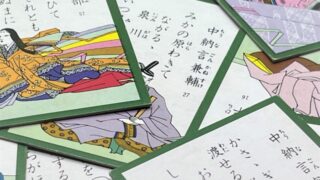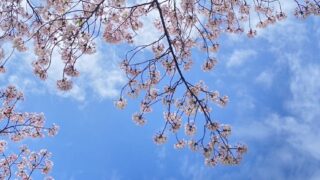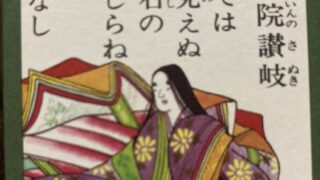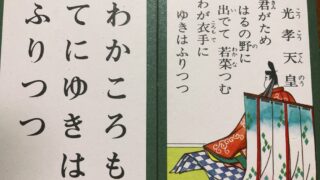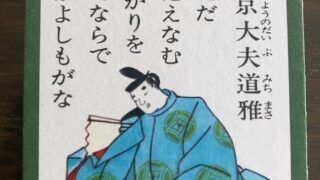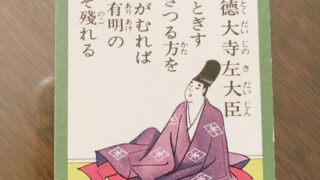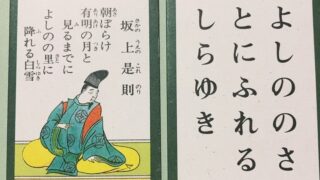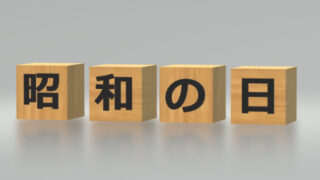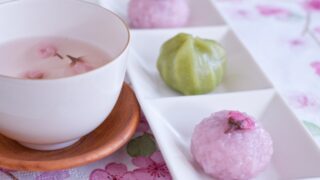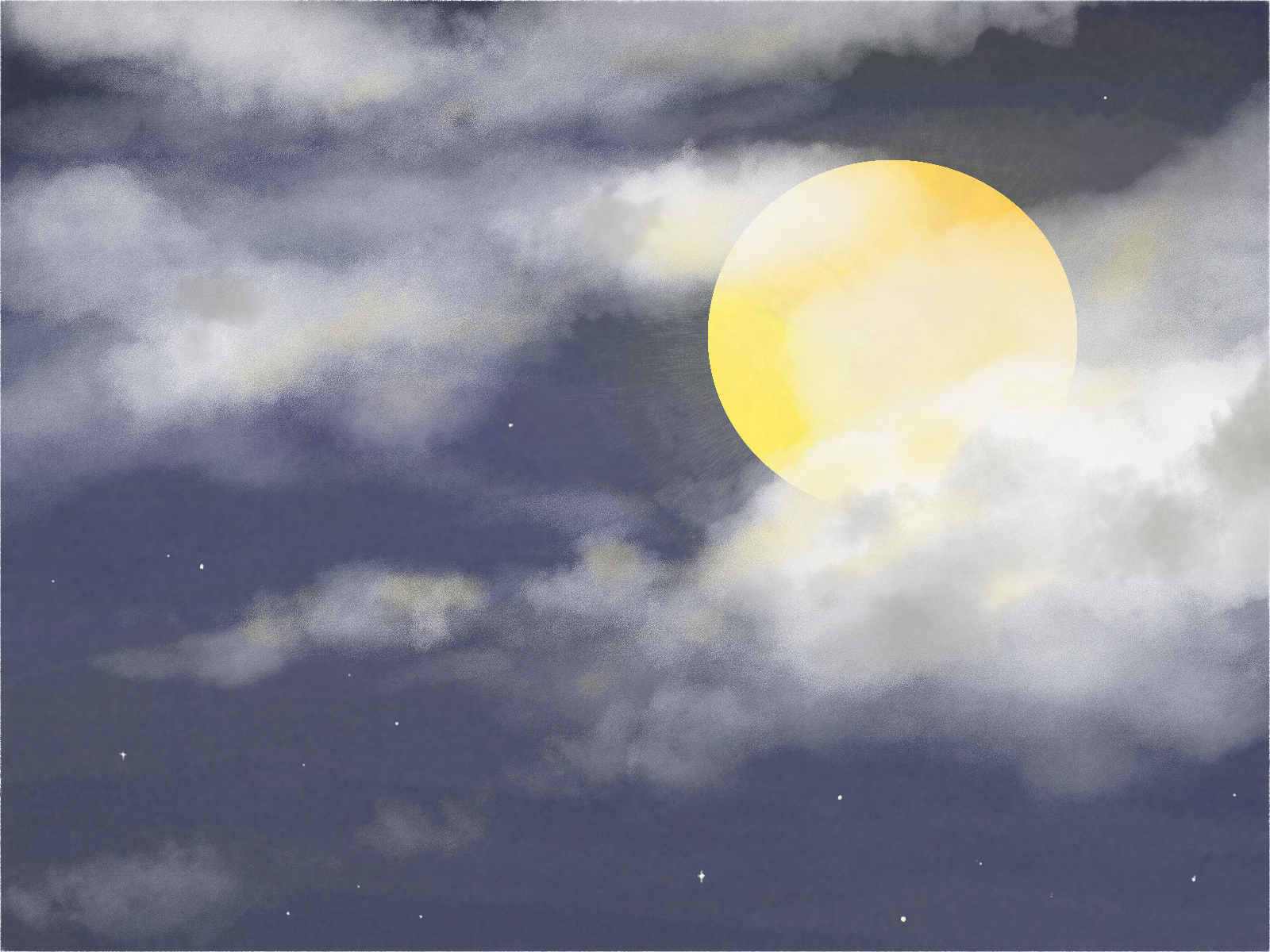秋風に たなびく雲の 絶え間より もれ出づる月の 影のさやけさ
左京大夫顕輔 (1090-1155)
百人一首 七十九番 秋
「新古今集」
かな
あきかぜに たなびくくもの たえまより もれいづるつきの かげのさやけさ
言葉の意味
雲がたなびく
雲がうすく横に広がっている様子を表します。「たなびく」という動詞は、雲や煙、霞などと一緒に使われます。
This describes the appearance of clouds spreading thinly and horizontally. The verb tanabiku is used with things like clouds (kumo), smoke (kemuri), and haze (kasumi).

雲の絶え間
雲と雲の間という意味です。
This means the gaps or intervals between clouds.
月の影
影はshadow ですが、「月影」「月の影」という使われ方をしている時は月の光という意味になります。
While kage generally means shadow, when used in expressions like tsukikage (月影) or tsuki no kage (月の影), it means moonlight.
もれ出づる
今の言葉では「漏れ出る」「漏れる」「あふれる」「こぼれ出る」になります。箱や袋などの入れ物の中に入っているものが外に出てくる様子を表します。ここでは雲の間からあふれるように月の光が見えてくる様子を表しています。
In modern Japanese, this is rendered as morēderu, moreru, afureru, or kobore-deru. It describes contents spilling out or leaking out from a container, like a box or bag. Here, it describes the moonlight appearing as if it is overflowing from the gaps between the clouds.
さやけさ
古い言葉です。はっきりとしていて美しい様子を表します。今の言葉では「澄み切った美しさ」と表現されることが多いです。
This is an old word. It describes a state of being clear and beautiful. In modern terms, it is often expressed as “sumikitta utsukushisa” (clear, pristine beauty).
現代語訳
秋風がふいてたなびいている雲の間からあふれ出てくる月の澄み切った美しさよ
Oh, the clear, pristine beauty of the moonlight overflowing from the gaps in the autumn wind-blown, horizontally-spreading clouds!
秋はお月見の季節です。秋の夜の月の美しさがシンプルに伝わってきます。雲はあるけど空気が澄み切っていて、雲の間に見える月がくっきりと美しい。その美しさに感動して詠んだ歌です。
Autumn is the season for moon viewing (otsukimi) in Japan. The poem simply conveys the beauty of the moon on an autumn night. Although there are clouds, the air is clear, and the moon visible in the gaps between the clouds is sharp and distinct. This tanka (short poem) was composed out of deep emotion for that beauty.
「澄み切る」はにごりや汚れがない状態を表します。水、空気、心などといった言葉といっしょに使います。
This expresses a state of having no murkiness or impurities. It is used with words like water (mizu), air (kūki), and the heart/mind (kokoro).
「くっきり」はN1の単語です。ものの色や輪郭がはっきりとしているという状態を表します。「はっきり」と似ていますが、「はっきり」の方が使える場面が多いです。
This is an N1 level word (advanced Japanese). It describes a state where the color or outline of an object is sharp and distinct. It is similar to hakkiri (clearly), but hakkiri can be used in a wider variety of situations.
今年は例年より暑く一日中エアコンをつける日が長かったのですが、朝晩はようやくすずしくなり、秋が近づいてきたように感じます。空を眺めるのにも、運動や読書をするのにもいい季節です。
今日もここまで読んでくれてありがとうございました。
令和七年九月二十八日
